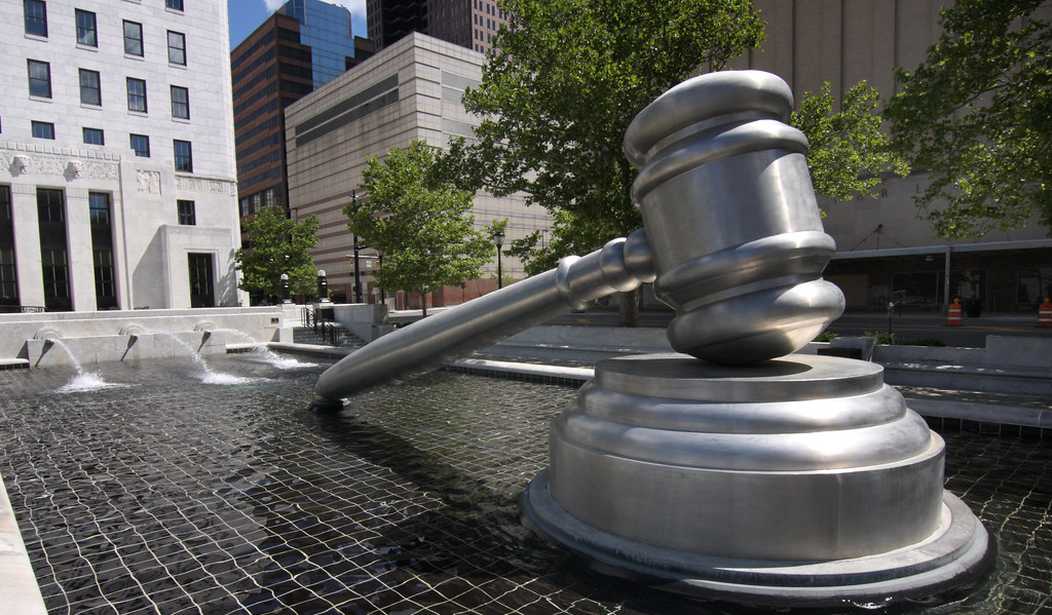There are two major “camps” of constitutional interpretation: originalism/textualism, and living constitutionalism. Originalism and textualism have some overlap and are generally focused on the laws as written, while living constitutionalism injects the current zeitgeist of the judiciary into interpreting (i.e., mangling) the Constitution. The Pacific Legal Foundation has a great article explaining the concepts (archived links), which also includes a legitimate critique of conservative Harvard Law School Professor Adrian Vermuele’s concept of “Common good originalism.”
As if the existing methods of constitutional interpretation weren’t enough, there’s a new method proposed in the Washington University Law Review, and it’s called “Judicial Moral Prophecy” (archived links):
American judges decry past moral lapses as intolerable. They paint their predecessors’ worst mistakes as tragedies that must never be allowed to happen again. When given the chance to avoid new injustices, however, judges increasingly flaunt their moral indifference. They insist that legal fidelity requires them to ignore whether their own rulings will be remembered as monstrous. But this cavalier outlook—for all its devotion to the past—is remarkably ahistorical. Feats of legal craft have never survived cultural repudiation. When precedents become morally shameful, the quality of their reasoning ceases to matter. The opinions’ authors are remembered not for the technical virtues they displayed, but for the evils they enabled.
This Article explains why courts should contemplate—and heed—the moral judgments of coming generations. Doing so is not an arbitrary projection of personal fancy; it is a corollary of the shared practice of retrospective condemnation. Tenets of cultural morality often achieve judicial recognition, and those truisms inevitably shape how courts perceive their interpretive responsibilities. Methodologies that ignore the outlines of future regret thus threaten to saddle the legal system with precedents that time will construe as lawless.
Despite the formalizing pressures of modern legal discourse, a countertrend has begun to emerge: that of judicial moral prophecy. This growing practice should be viewed as an essential adjunct to the rule of law, rather than a sad diversion from it. Factors that will ultimately eclipse logical precision can and should inform conceptions of judicial duty in the present. And past patterns of failure offer insights for transcending current cultural assumptions. In the end, the legal system suffers when judges inflict tragic harms for the sake of analytical purity. We should stop pretending that legal fidelity blinds us to this recurring lesson.
I read the paper and walked away with bewilderment. This is a very dangerous method of constitutional interpretation, if it can be called a method at all. If originalism and textualism are focused on the text as written in the past, living constitutionalism factors in present vagaries and vicissitudes, judicial moral prophecy seeks to divine an unknowable, unpredictable future. It is a complete transmogrification of the role of the judiciary into psychics and soothsayers.
The introduction section of the article touches upon firearms laws:
The modern Supreme Court, it seems, cares little about how society will judge its work. Even in high-salience cases, the Justices increasingly describe their responsibilities as flowing solely from a static past. Culturally adaptive firearm regulations are received with scorn;[2] life-shaping liberty interests cannot survive their encounter with “history and tradition.”[3] Naturally, then, the Court has disclaimed any authority to anticipate the outrage of later audiences.[4] This stance draws support from influential lower-court judges who have ridiculed the supposed relevance of future morality.[5] Amidst it all, academic originalists continue to portray judicial review as largely an exercise in historical fidelity.[6] Institutional support for this past-centered paradigm has never been greater.
“Judicial moral prophecy” can be pejoratively called “crystal ball constitutionalism.” It’s far worse than living constitutionalism; with the latter, there’s at least a way of understanding the current conditions being unfairly factored into constitutional interpretation. With “crystal ball constitutionalism” (or “crystal meth constitutionalism” if you want to call it that), the judges are bound by nothing besides their limitless imagination.
There’s a wide-ranging assault on the Supreme Court’s jurisprudence now that leftists have lost control of it, including this academic attack based on a questionable idea. One can only hope that these ideas don’t enter the mainstream. Unfortunately, what happens today in academia often portends what happens in broader society tomorrow, so the sooner kooky ideas like this can be destroyed, the better.








Join the conversation as a VIP Member